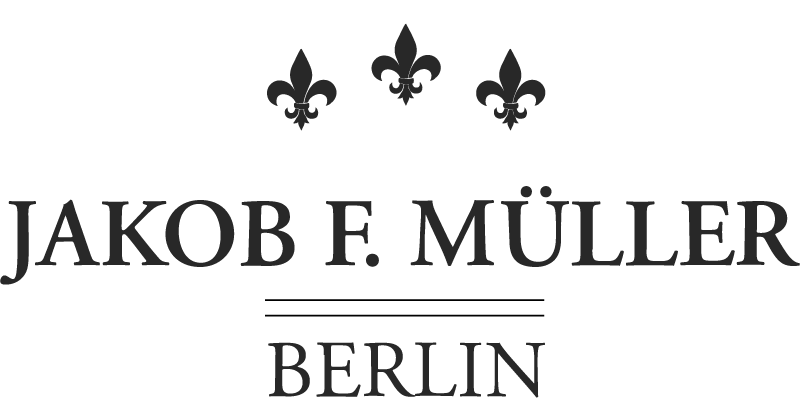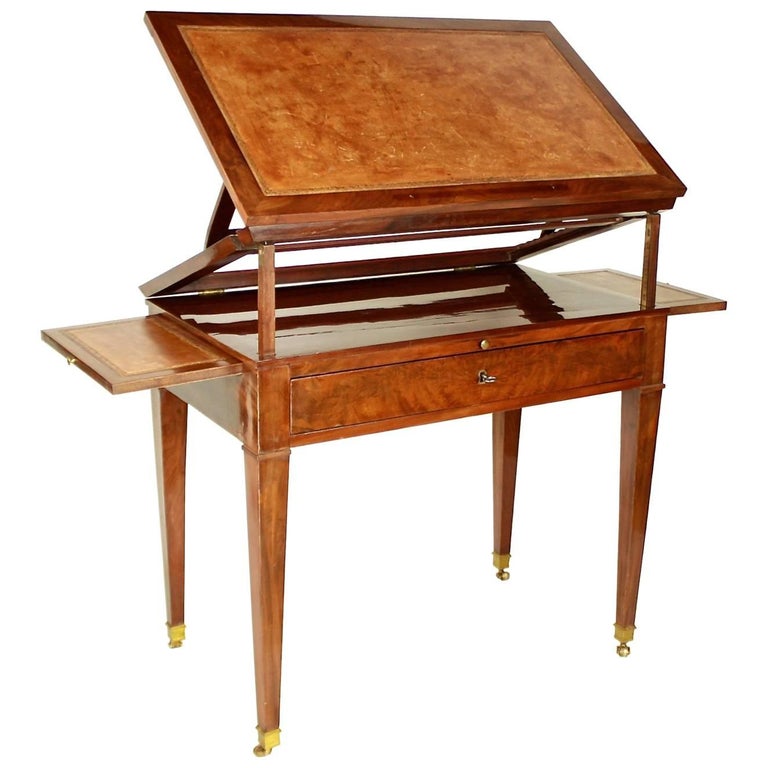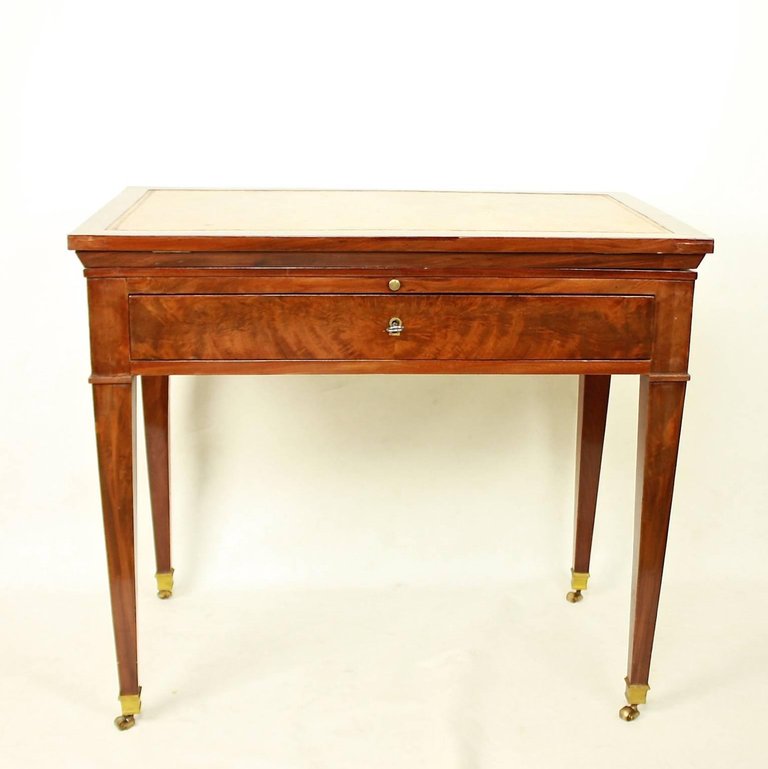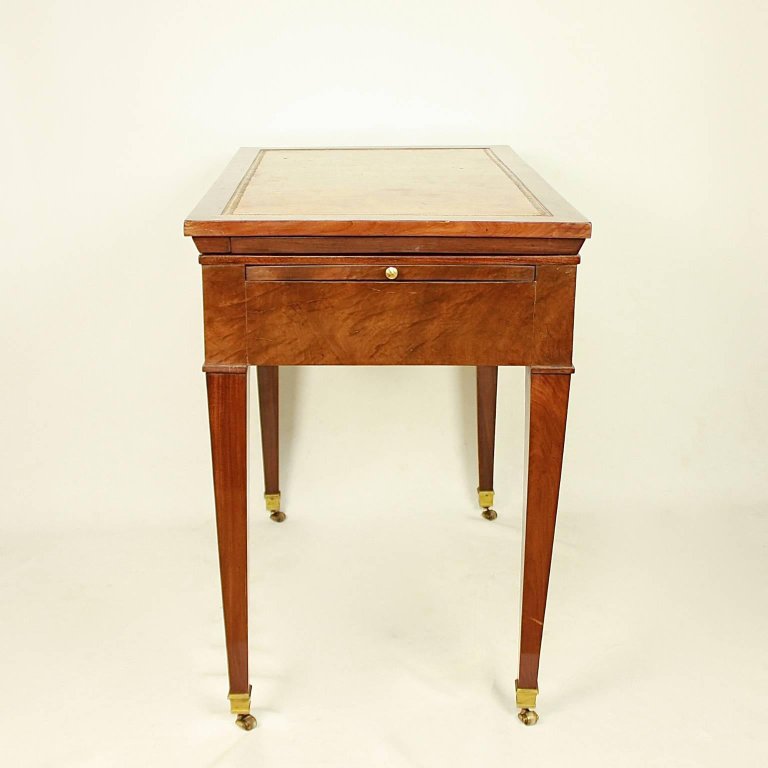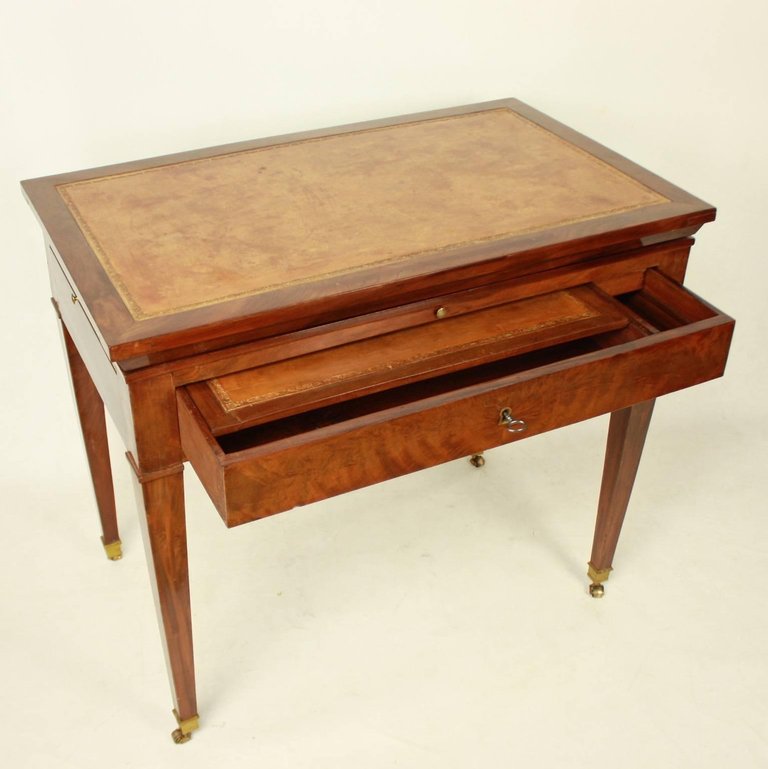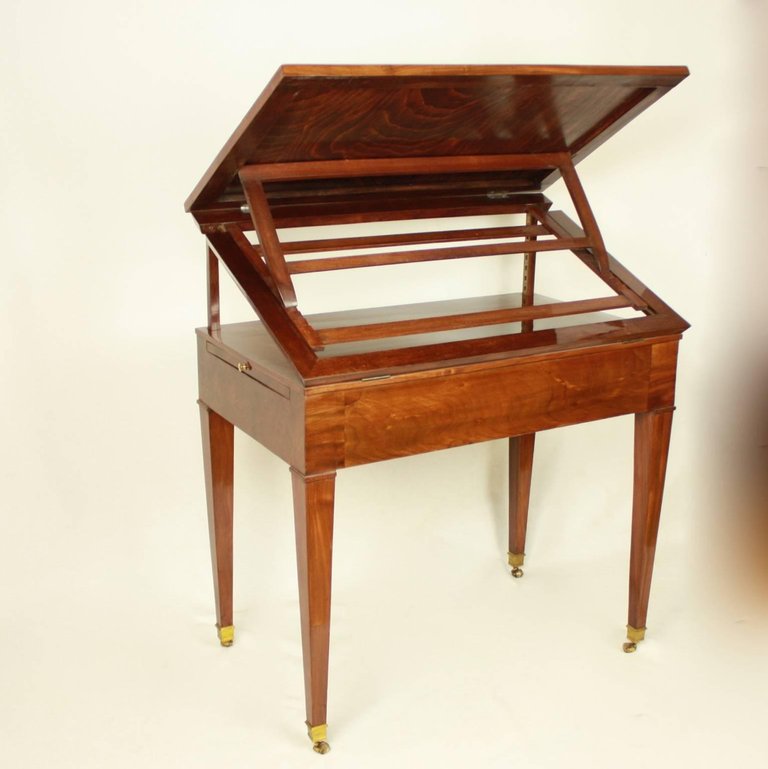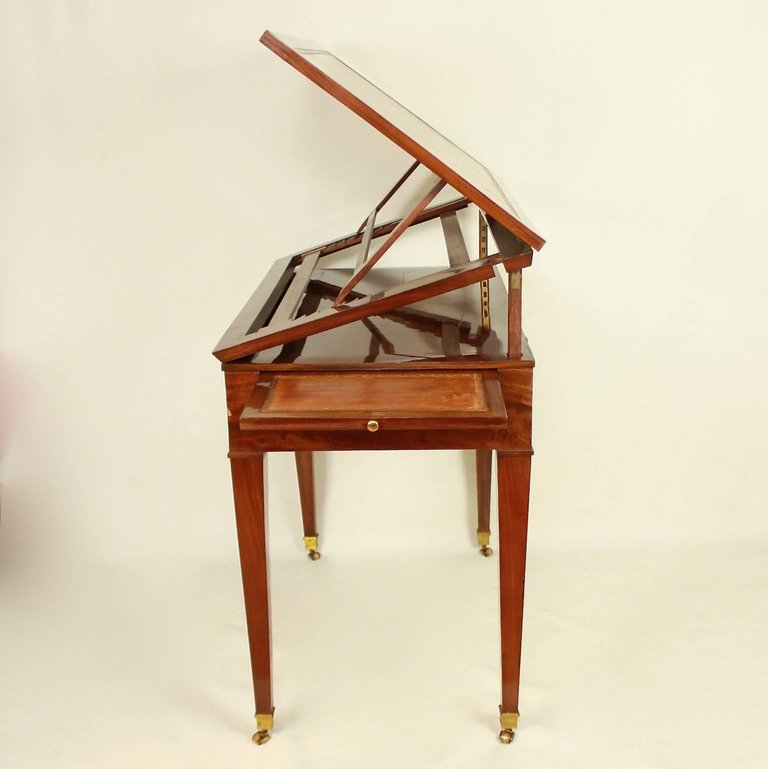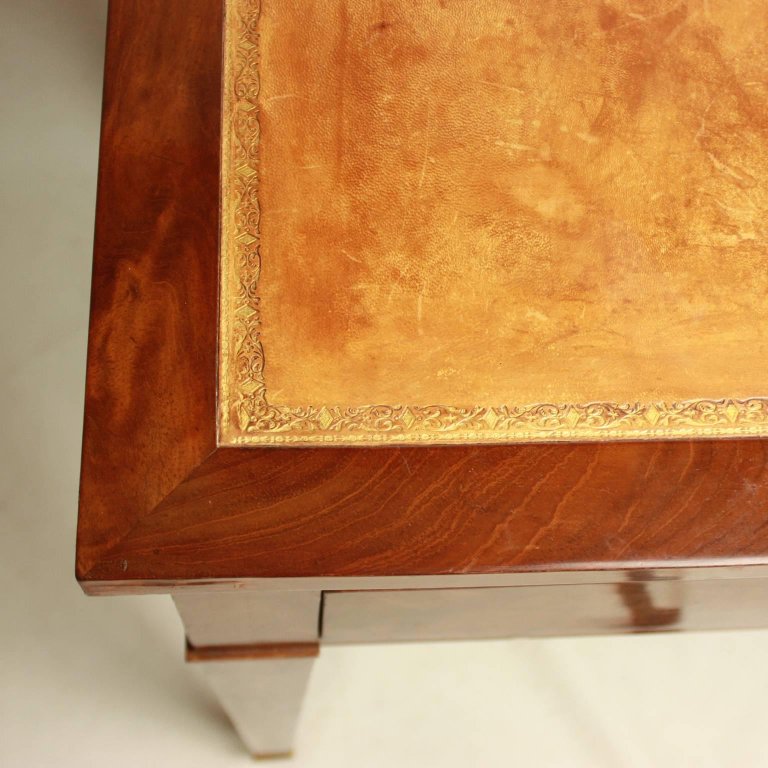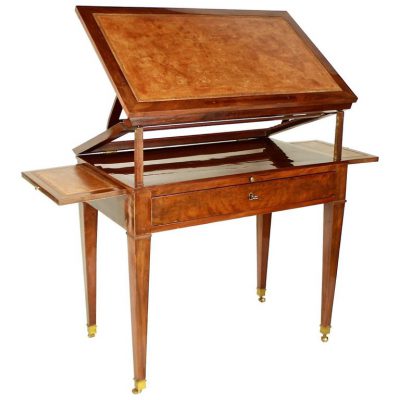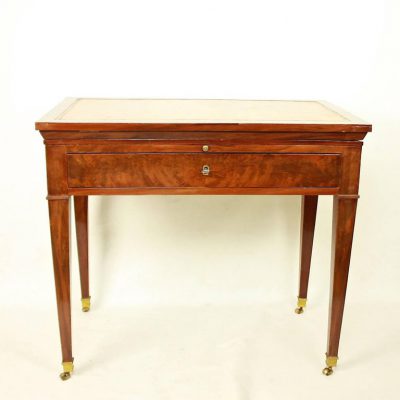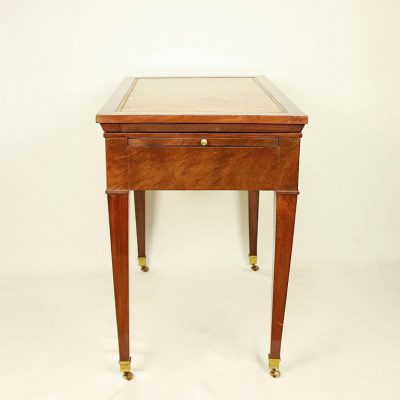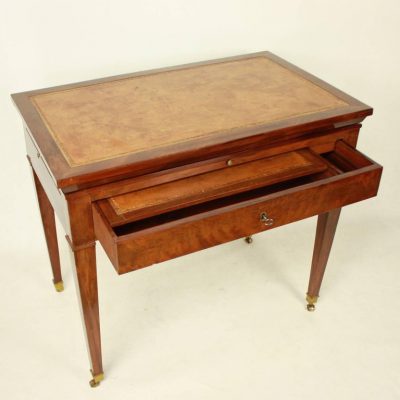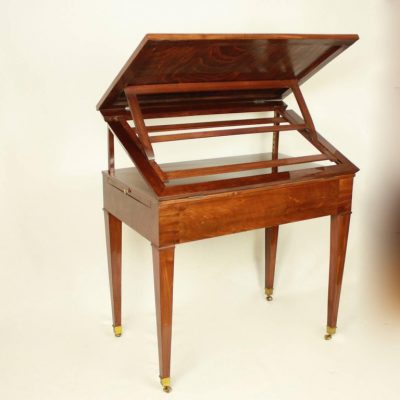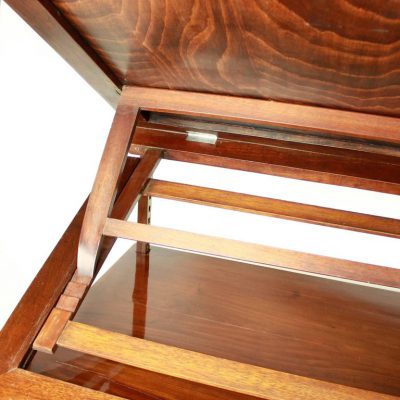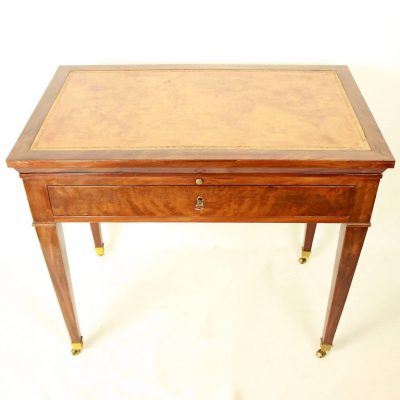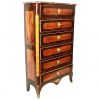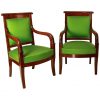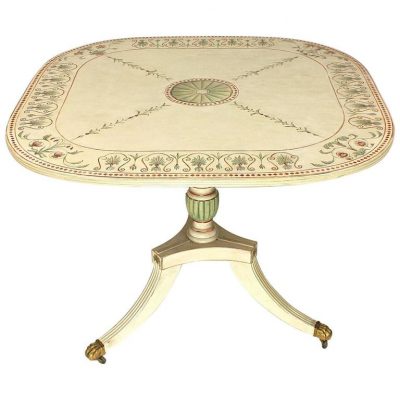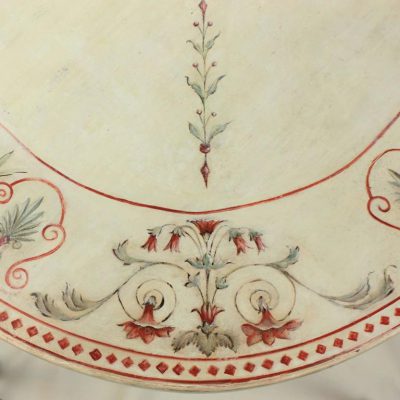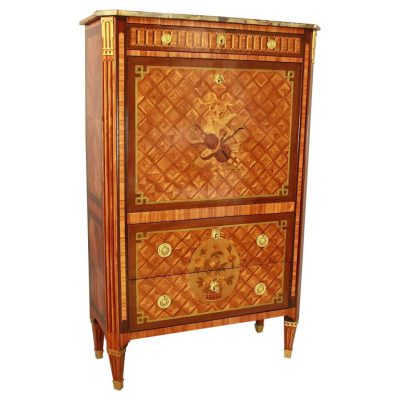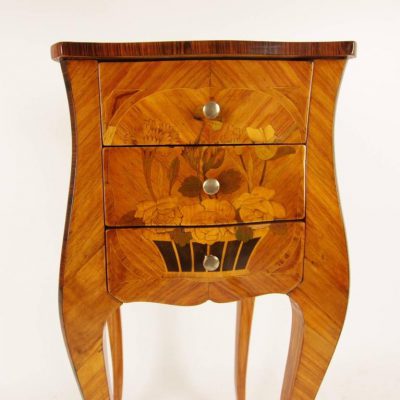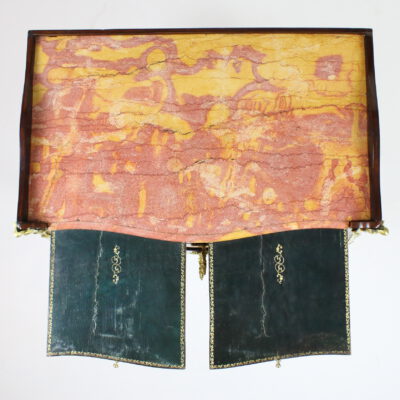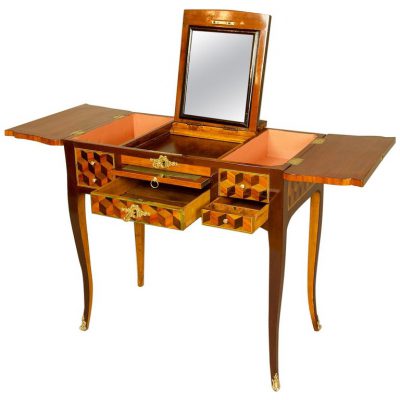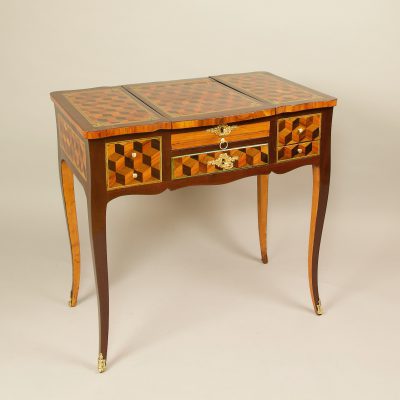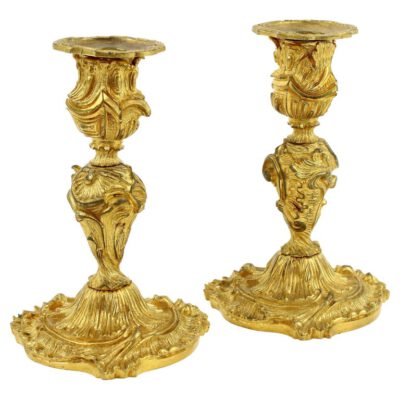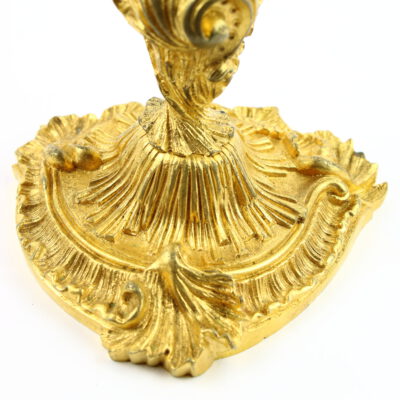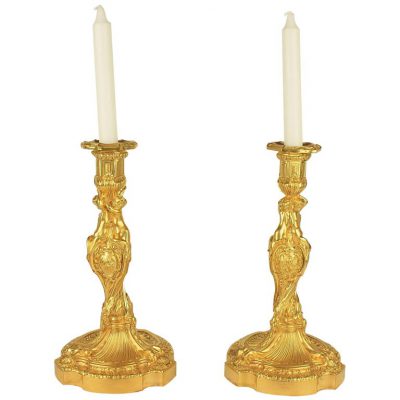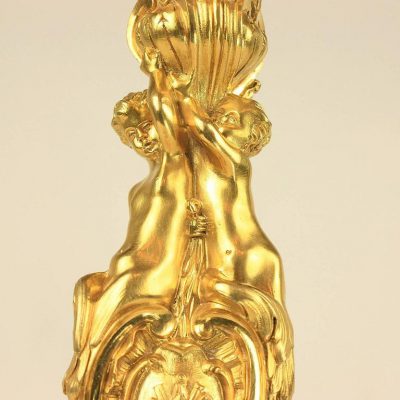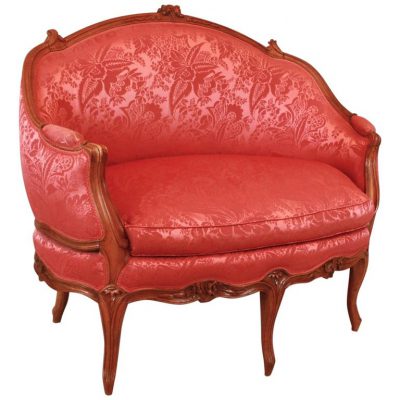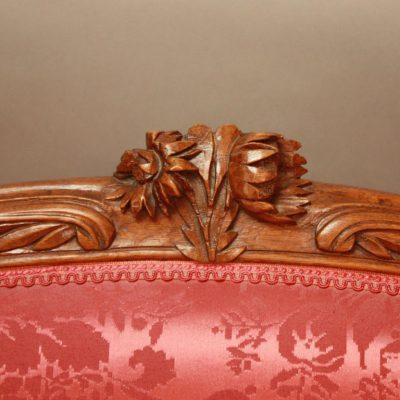A late 18th century Directoire mahogany architect’s table. A mechanical table with a double-hinged ratcheted top and the original gold-tooled brown leather lined writing surface, veneered in beautifully, if rather pale, flame-grained polished mahogany. The long frieze drawer displaying the beauty of the mahogany veneer with a central small brass button above the central inset brass key-hole mount that enables the mechanism for adjusting the height and angle of the writing surface. The interior of the frieze drawer is fitted with a leather-covered writing slide above one compartment next to a removable compartment divided into small parts for stationary. Candle slides underneath the tabletop can be pulled outward to hold adjustable candlesticks. The square, tapering legs with a top molding and brass castors. Closed, the architect’s table gives little hint of its actual purpose appearing as an elegant console table.
This architect’s table is also known as a ‘table à la Tronchin’ after Théodore Tronchin (Genf 1709- Paris 1781), an unconventional but influential 18th-century Swiss physician who advised a sluggish aristocrat “to write at a raised desk, while resting against a tall stool”. His popularity spread amongst European royalty and the upper classes. The greatest cabinetmakers of the time, such as Jean-Henri Riesener (1734-1806) and David Roentgen (1743-1807) designed versions of this type of table differing only in the degree of their embellishment, the materials used and the round or square shape of the legs.
Comparative literature: Kjellberg, Pierre: Les meubles Francais du 18ie siècle, Paris 2008, p. 189 (here mistakingly called ‘Claude’ Chapuis instead of Jean-Joseph Chapuis, Claude was not a cabinetmaker but a trader).
Condition: very good, min. wear consistent with age and use, min. fading – detailed condition report on request
